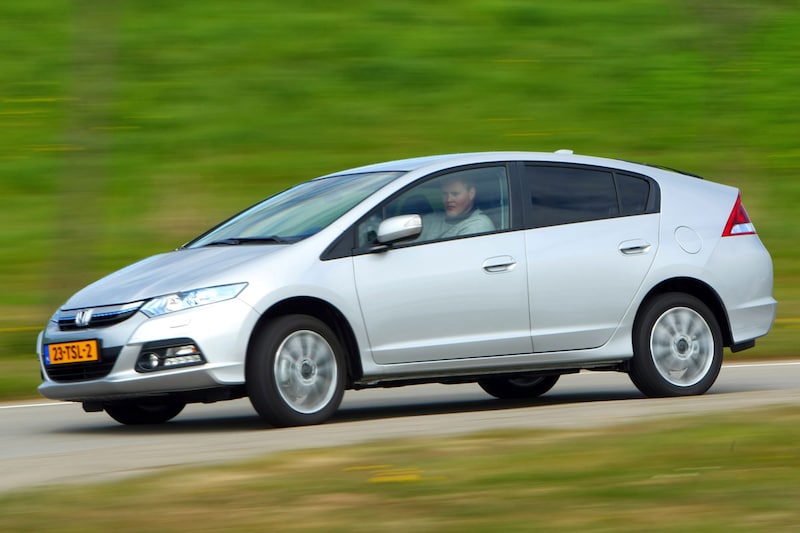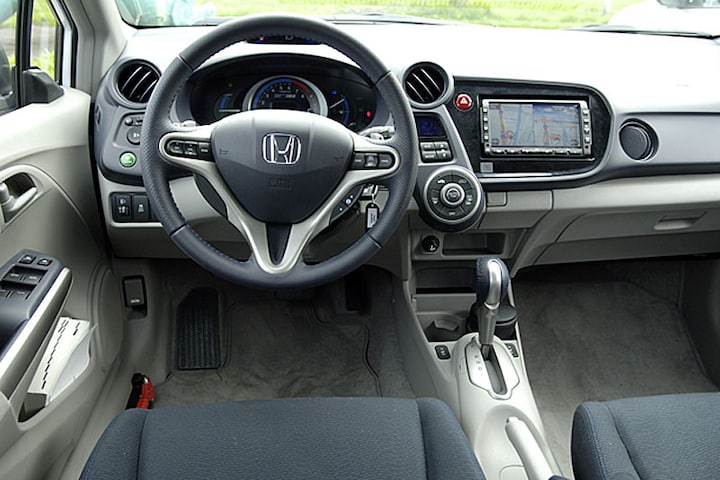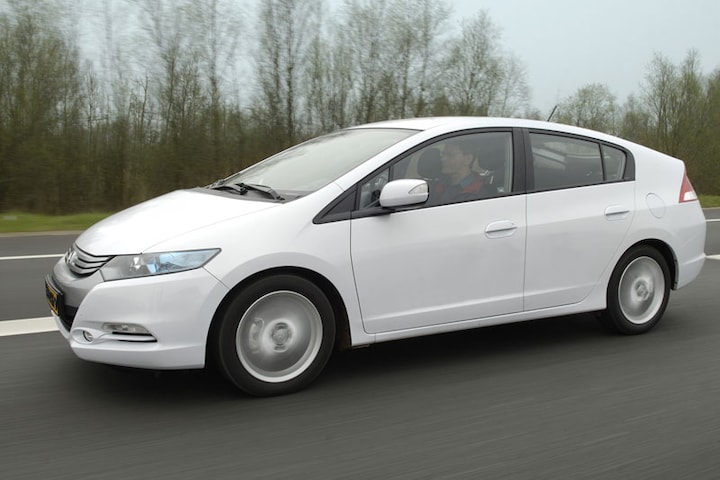‘Pushing the accelerator to the floor makes no sense at all’

If it’s shaped like a Prius, has a battery like a Prius, and comes from the same country as the Prius… it could also be a Honda Insight. The second generation of Honda’s streamlined hybrid appeared on the Dutch market in 2009 and disappeared in 2015, after a total of 6,210 units sold. Toyota sold only slightly more Priuses… in 2008 alone. Is this shadow-dwelling hybrid a perfect example of ‘unknown is unloved’? Owners provide the answer themselves.
Huh, the second generation Insight? Yes, the first generation came onto the market as early as 1999. A car that we did not officially know in the Netherlands, but that has been imported gradually by enthusiasts. You had to be an enthusiast to drive this not very practical coupe, but then you were driving something special. The Insight that we discuss in this article is, with its five doors, a lot more consumer-friendly.

Practical hybrid?
Let’s continue with the practical aspects, although a small sketch of the situation is also nice. The next owner will provide us with this. “The dashboard is a bit unusual, but still easy to operate. The panels are quite hard, but everything you have to touch such as buttons and stems still have that slightly ‘soft-touch’ feeling. And let’s be honest, you never actually touch the rest of your dash.”
Well, that does indeed give some feeling to the car. But is the interior of his 2009 Insight also cleverly laid out? “The compartments in the doors are quite large, the same for the glove compartment. The space in the center armrest is quite narrow but deep. For that you have two smart cup holders and two storage compartments. There is also a hidden coin box that I have not used yet.”

Seating comfort front and rear
Well, quite practical, and owners are also reasonably satisfied with the interior space. Although… “The space available is now somewhat disappointing due to the arrival of a child. We are both tall (2.00 & 1.85 metres) and sitting in front of the high chair is actually only comfortable for short distances. This may improve if we turn the chair around. There is also little space left in the trunk if you also need to take a stroller with you. On holiday you have to try and measure a bit more, but it works.” We dare to say that the space is good, after all, many couples with a small one immediately opt for the station wagon or SUV.
Yet it is not all peace and quiet for other drivers either. The sloping roofline takes away some space in the rear. “The front seats appear to provide sufficient support and even after steering for several hours, you get out of the car in a reasonably fit state,” writes one of them. “At the back, however, it is a slightly different story due to the steeply sloping roofline. If you are taller than 1.80 metres, you will have to slump quite a bit to avoid hitting your head against the roof all the time.” Another user emphasizes that the rear entry in particular requires some attention. “The slope of the roof is such that you have to warn tall passengers in the back to prevent them from hitting their heads when getting out. However, I find the headroom inside sufficient. The legroom is somewhat modest, but also sufficient.”

Honda Insight handling
In general, Honda makes nice-to-drive cars. The Insight also has many satisfied drivers, although there are also some comments. “The handling of the car is good, especially considering that the car is on narrow tires. I increased the tire pressure to 2.8 bar, which makes the car drive a little smoother (and more economical). The Insight’s battery pack is not that large and heavy and has no influence whatsoever on the handling,” writes a largely satisfied driver.

Another noted a somewhat stiff character: “The handling is excellent, hardly understeered, just a predictable car. The suspension comfort is quite stiff and the shock absorbers are also very loud on the many speed bumps in our area. That doesn’t deserve a top prize.” It is something that many other directors also have difficulty with to a greater or lesser extent. “The suspension is a bit stiff, but not too much, and the car can be steered well through the bend, partly thanks to the stiff suspension, and goes straight ahead nicely. We do feel the bumps and we should not take those famous Dutch speed bumps at too high speed,” writes one of them. The conclusion is: “But it is not a nuisance.”
Another driver takes stock after two years, but it is still negative compared to the chassis. “The main point of criticism is the suspension/damping. I think the suspension is too soft and the damping too stiff. The car rebounds smoothly at speed bumps, but rebound occurs with a jerk, which makes it feel uncomfortable.” Another concern raised by several drivers is crosswind sensitivity.

And the drivetrain?
The drive is provided by a 1.3-liter four-cylinder that, in combination with an electric motor, delivers 98 hp. Honda equips the whole with a CVT automatic transmission with stepless transmission. How does that work in practice? “Driving takes some getting used to,” explains this owner. “Pushing the accelerator pedal to the floor makes no sense at all. The engine then starts to roar and the car reacts with a delay to your input. So don’t do that. In an Insight you do this with policy.”
Another agrees on this point. “You don’t actually need the kickdown, push the pedal up to 3,000 rpm (along with the speedometer), and it goes just as fast and much quieter. Only above 3,000 rpm does the engine really make a lot of noise. I am of the opinion that someone who drives a car with a CVT gearbox does not actually know how to use a CVT.”

Yet not everyone always escapes the engine noise, like this driver: “The CVT automatic transmission took the most getting used to. This is especially disturbing when accelerating, which happens every time, for example, when merging onto the highway or overtaking provincially. When driving at a constant speed it is almost unnoticeable.” The CVT has a major advantage, which another driver likes to emphasize. Driving at 120 happens at about 2,500 rpm. Unless you are used to diesel or a large swept volume, this is a relaxing experience.”
Maintenance, malfunctions and irritations
We know, some readers will be delighted by the above headline. This is different with the Insight: owners really do not report any major problems. One more structural problem is wind noise at the front doors, which can be remedied by readjusting the door or rubber. Of course, this quality does not mean that the Insight is maintenance-free, and this driver provides insight into the costs: “We had a ‘mid-life’ service done at 120,000 km, including replacement of the (very expensive) Iridium spark plugs, CVT oil and all filters. That was over €1,000.” This rider also reports that the 12v battery has already been replaced twice, “it is cramped and empty quite quickly.”

One of the Insights now has more than 300,000 km on the odometer, most of which also runs on LPG. “Three tons: no problems so far. Still runs fine and has not required any repairs. The Insight continues to drive economically and I will continue to drive it for the time being,” says the owner with satisfaction.
It looks like we’ve really unearthed an unsung talent this time. The Honda Insight does a lot right and very little wrong. And for those who are curious about fuel consumption in practice? We previously investigated this using the AutoWeek Consumption Monitor. And that certainly wasn’t disappointing either.
– Thanks for information from Autoweek.nl